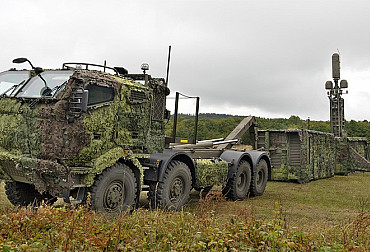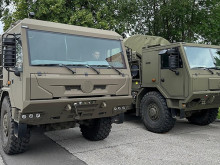From the ground and from the air, the Army helps with evacuation and flood relief. Deployment of up to 2,000 soldiers is valid until the end of October
The government has approved the deployment of up to 2,000 soldiers and related equipment to address the consequences of the devastating floods in the Czech Republic. This deployment is scheduled to last until the end of October, with the possibility of an extension if necessary. Prior to this decision, the Czech Army had already deployed helicopters and engineers in the worst-affected areas in coordination with the Integrated Rescue System (IRS). Following the government's approval, the army was able to release additional resources, including heavy equipment, medics, and more helicopters, which are currently working to repair the damage and deliver supplies. A US MQ-9 Reaper drone is also monitoring the situation. The Ministry of Defence says there is ample equipment available and strongly rejects claims from some critics about the alleged unpreparedness of the army.
A week before the tragic weekend, meteorologists confirmed the inevitable: the Czech Republic would be hit by extreme rainfall, potentially causing a once-in-a-hundred-year flood in many areas. Authorities gradually took the warnings more seriously, adapting their actions to minimize harm to people and property. The Army of the Czech Republic was no exception. "We are ready to support the integrated rescue system. Due to the impending floods, we have two helicopters and engineers with rescue equipment on standby. We can offer more, but the government would have to approve it. Stay safe and don't forget to follow the latest information," the army posted on its Facebook page on 12 September, two days before the floods began.
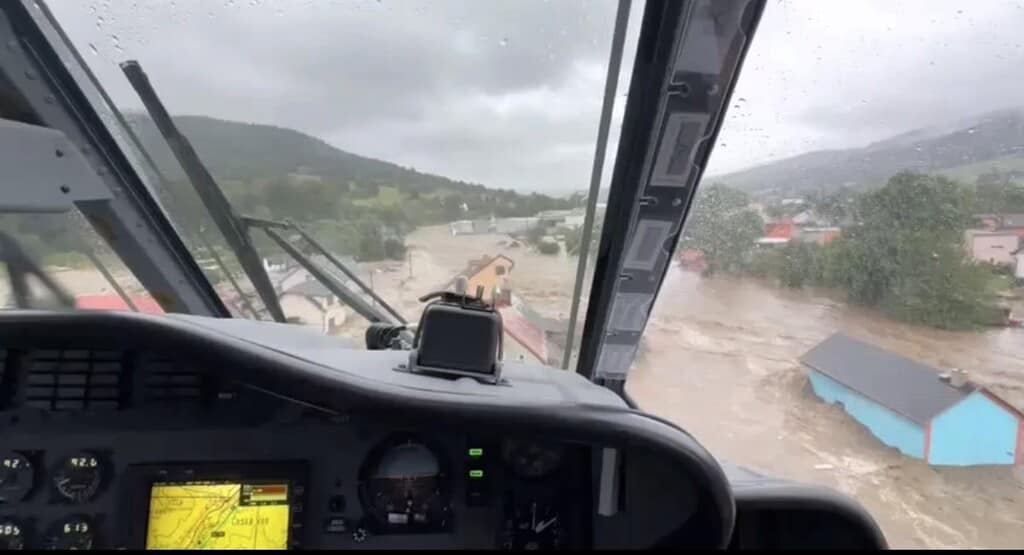
The government's approval was contingent on launching a broader operation. The first deployment occurred after coordination between the Czech Armed Forces command, the Military Geographical and Hydrometeorological Office—which conducted analyses and model simulations—and the IRS on Saturday, 14 September, when the first engineer units were dispatched. A military helicopter was also deployed in the severely affected Jeseník region in the Moravian-Silesian Region. More helicopters soon followed. "We currently have two helicopters in the air. Our W3A Sokol is saving lives in Jeseník, and the Mi-171Š is assisting with evacuations from a building in Bruntál," the army posted on social media a day later, attaching a dramatic video of one of the rescues. "Four more helicopters (2x Mi-17, 2x Mi-171Š) are on standby. Engineers from the 153rd Engineer Battalion are ready with wheeled equipment to transport materials and evacuate people from the affected areas," army officials reported on Sunday.
Evacuations have not always been without challenges. Some residents in the most flood-affected areas refused to leave their homes until the last moment, despite the danger. "I went to a man's house—half of it was already gone. He refused to leave. I tried to persuade him, offering to take him to a warm place where he could get medical care. He said we couldn’t get him out. I told him to call us if he changed his mind, and we would return for him," Czech Television journalist Vojtěch Gibiš quoted a rescuer from the W3A Sokol helicopter, based at the 24th Transport Air Base in Prague-Kbely, on his Facebook profile. "I am proud of the whole crew for how we managed the situation. Only after landing in Mošnov could we rest a bit. The crew was completely exhausted but happy that we did a good job," said helicopter captain Vlastimil Baudyš, who added that they rescued 25 people, along with four dogs and one cat.
Defence Minister Jana Černochová dismissed as nonsense the criticisms from opposition parties and some citizens who claimed the army lacked essential equipment due to its support for Ukraine. She posted a video of the helicopter rescue on X (formerly Twitter), saying: "Please tell the idiots who still haven’t accepted our aid to Ukraine that we have enough helicopters. Thank you." In total, eight helicopters have been involved since the operation began, with a ninth assisting in Poland, where the floodwaters have now moved.
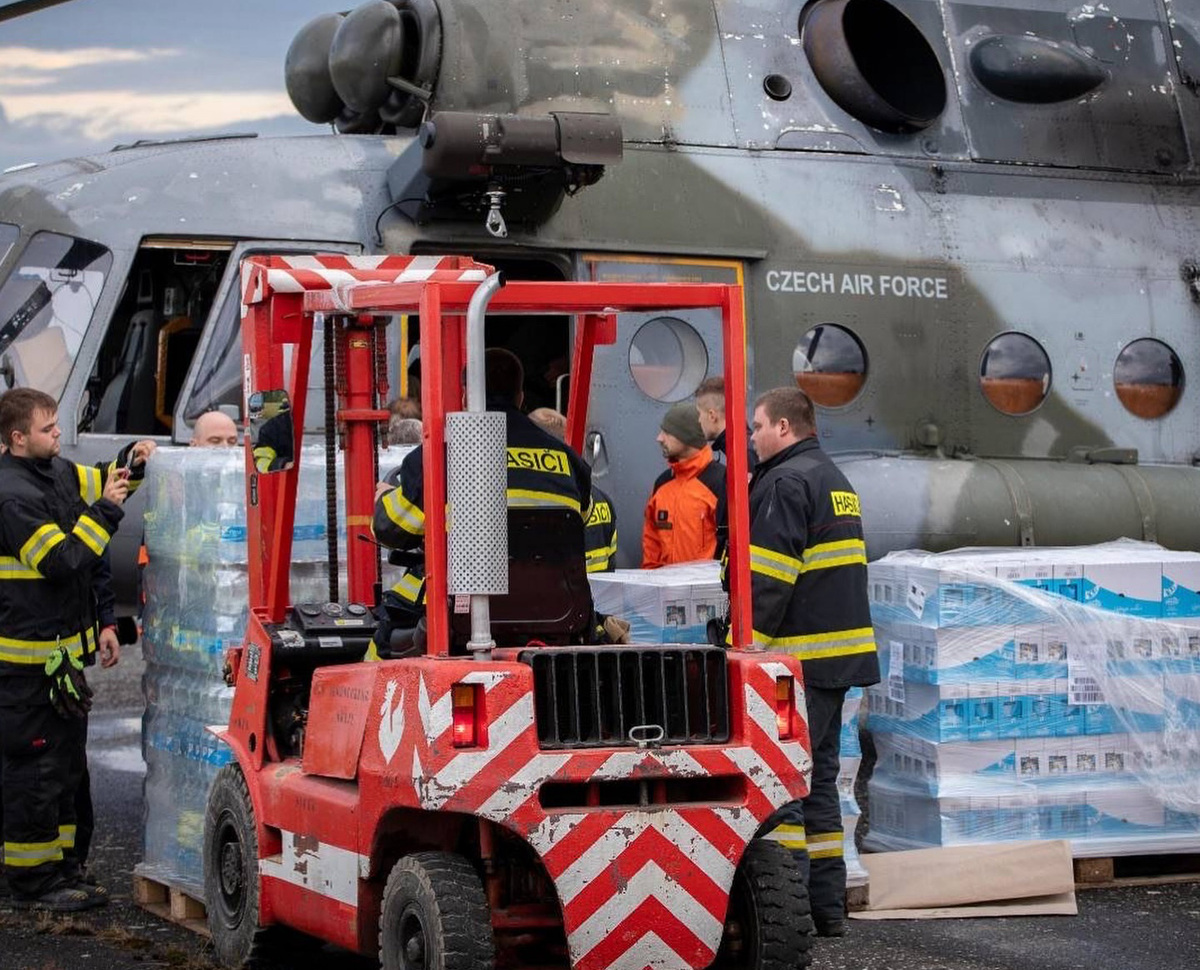
As of Tuesday, 17 September, thanks to the government’s approval, up to 2,000 soldiers, including heavy equipment such as excavators, recovery tanks, and additional helicopters, can now be deployed. Soldiers will also be constructing replacement bridges as part of the flood relief efforts. "The Czech Army’s involvement will allow much faster assistance to regions, municipalities, and inhabitants critically affected by the floods. As we promised, we will do everything possible to help people cope with this disaster," said Defence Minister Jana Černochová at a recent press conference. She reiterated that the army, even with a smaller force, has been assisting from the beginning, including providing supplies through valid agreements with the IRS.
Active reserves also joined the efforts in the affected areas. "Professional soldiers, active reserves of the Czech Armed Forces, military firefighters, civilians from the Ministry of Defence, our ground and air equipment, doctors and medics in our hospitals, and military psychologists in the field are all involved," the defence minister listed on her X profile on Wednesday, 18 September.
After filling sandbags and performing emergency evacuations, soldiers have now moved on to recovery work—removing debris, clearing mud from homes, and delivering essential supplies like drinking water, food, and cleaning materials. Soldiers also helped firefighters deliver 2,000 desiccant dryers from the State Material Reserve Administration.
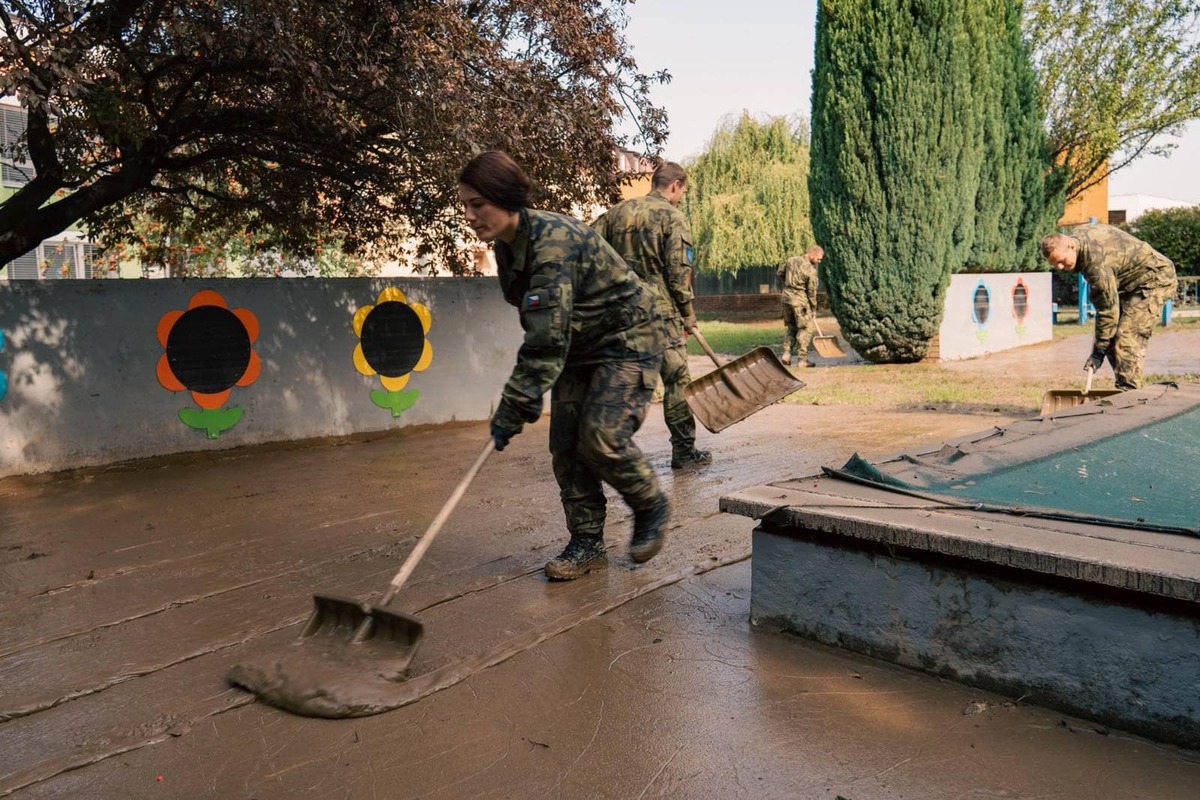
The American MQ-9 Reaper drone, used for coordinating interventions, has been critical in the most affected areas of the Moravian-Silesian region, a nearly unprecedented use in Czech conditions. "The American MQ-9 Reaper was flying over flooded Moravia all day, sending real-time data to the IRS operational center," the Czech Army reported on X. "The Americans, who participated in the Ample Strike exercise, offered us the drone for post-flood monitoring. It can stay airborne for tens of hours and is equipped with state-of-the-art terrain monitoring technology. It’s good to have friends," the army stated.
Firefighters, like those in Olomouc, have also praised the soldiers' cooperation. "Heavy equipment—UDS, crawler excavators, and other special vehicles of the Fire Brigade and the Army of the Czech Republic—are clearing riverbeds. We are working to restore access to the waterworks in Bělá p. P. so water supply can be restored," the Fire Brigade of the Olomouc Region posted on Facebook.
The first tasks for the teams equipped with bridging technology are now underway. The temporary bridges will take two days to build, but site identification, crisis staff approval, and preparation will take at least a week. Two reconnaissance teams have already been dispatched to the Moravian-Silesian and Olomouc regions with specialists from the University of Defence’s Department of Engineering Structures. "Each bridge assembly consists of three-meter-long pieces, which form a bridge span of 24 meters. The longest bridge set we've built was 81 meters, though the standard is 18 to 21 meters. Unlike heavy bridge sets, which take a week to assemble, this set can be completed in one or two days," said Pavel Maňas from the University of Defence’s Department of Engineering Technologies. The army has already received about 20 requests for temporary bridge construction.
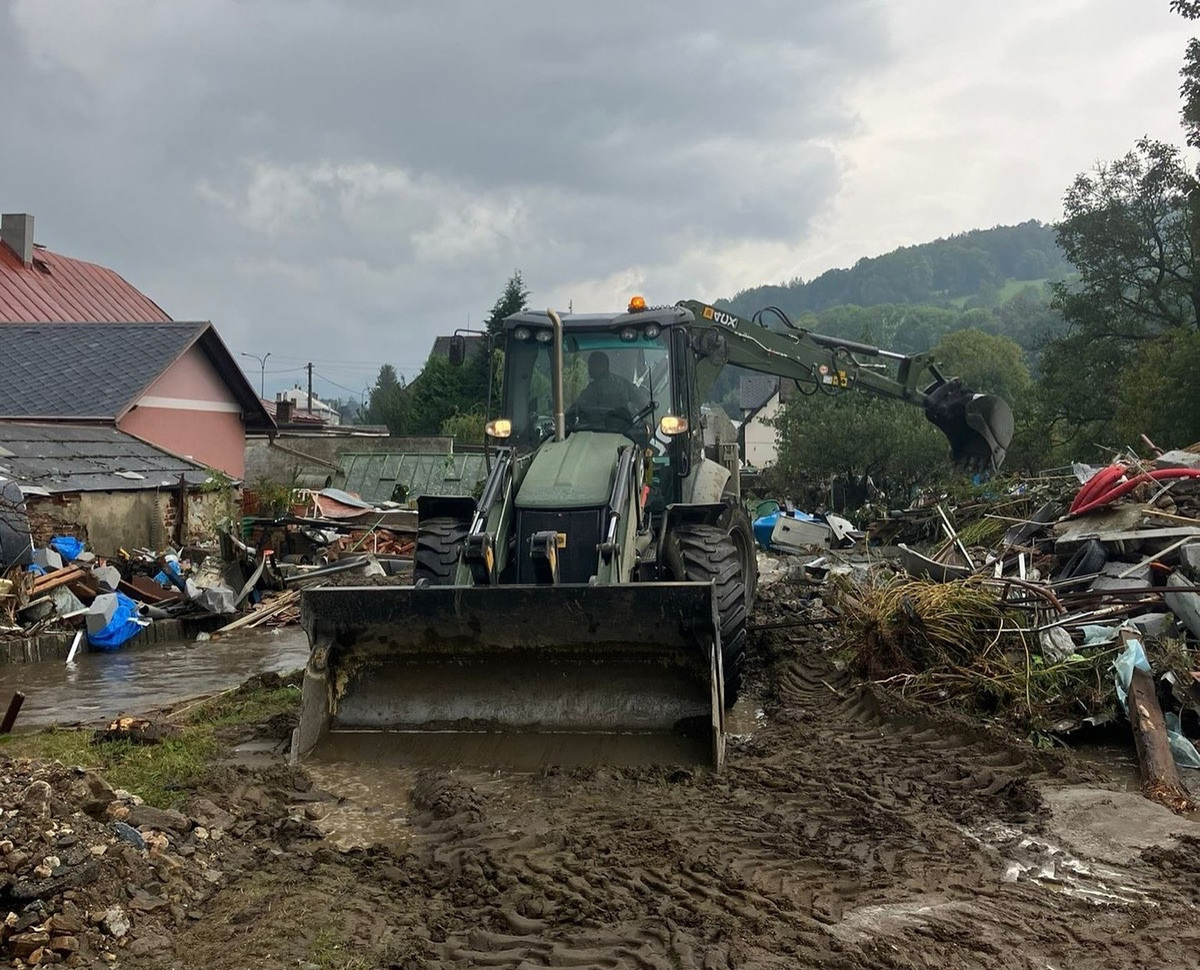
The Army of the Czech Republic is also assisting areas experiencing internet and mobile signal outages due to the floods—particularly for regional and Senate elections. "The Czech Armed Forces have provided some municipalities in Jeseník with the STARLINK system. Local governments now have satellite high-speed internet for secure elections. If the power grid is unavailable, the army will supply inverters to connect to car batteries and create temporary power supplies. Local governments can also use IRIDIUM satellite phones to make calls to any GSM mobile network," the Ministry of Defence announced on X on Friday, 20 September.
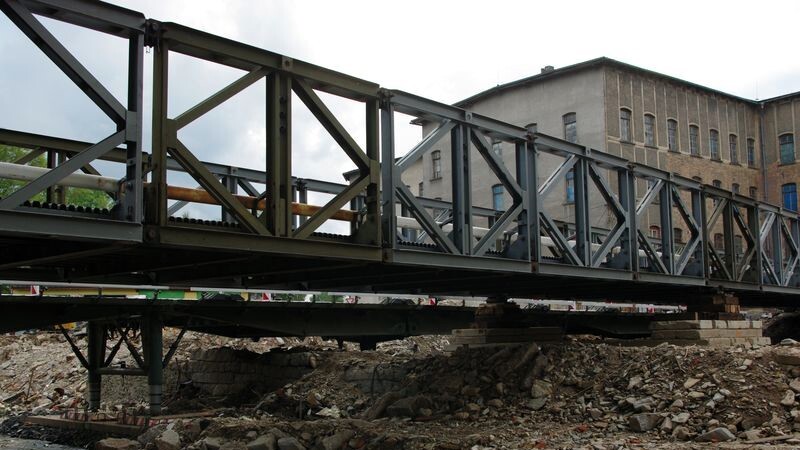
With the increased presence of soldiers on Czech roads, the army has issued three basic rules for the public: 1. Never join a military convoy 2. Do not overtake a convoy unless you can pass the entire convoy 3. Follow instructions from the Military Police and Czech Republic Police.















